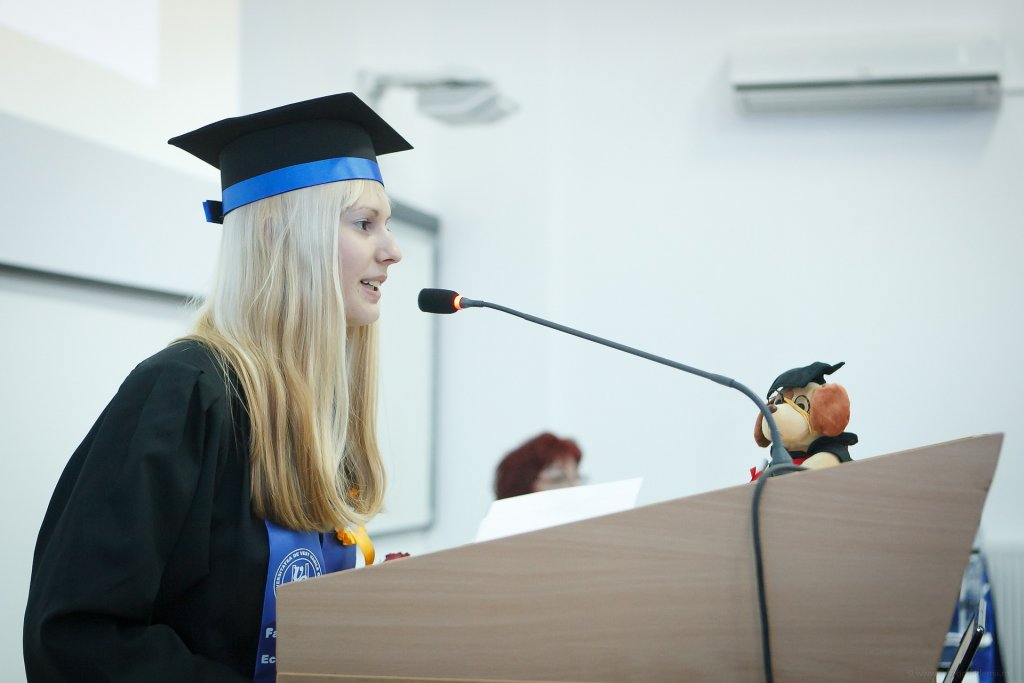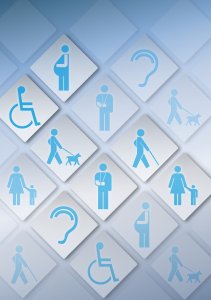Transitioning to Post-Secondary School
The Wired Audiologist
Peter Stelmacovich, MCl Sc, is a hard of hearing audiologist who works for a Canadian manufacturer. In Peter’s column, The Wired Audiologist, he discusses many of the issues that affect him personally as both a hard of hearing consumer and an audiologist.

The transition from high school to university or college can be stressful time for any young person. Students with hearing loss face added challenges not faced by their typical hearing peers.
There are many differences between secondary and post-secondary schools, some of which are of particular importance to students with hearing loss. For example, the typical class size in high school is around 35 students. University classes can range from 50 to 2,000 students in one class. This larger class size means the instructor’s speech will be at greater distance and embedded in a greater amount of noise. This means that additional equipment will be necessary to comprehend speech.
An additional issue is that for many students, this may be their first time living away from home. The student must become more self-sufficient and cannot rely on parental support for such basic tasks as waking up in the morning. I am always quite surprised when I conduct informal polls of high school students asking how they wake up every morning. I do not have exact figures, but it seems that about a third of students still rely on a parent or guardian to shake them awake every day. These students will quickly need to ensure they have a reliable means of waking up, hearing fire alarms, and other important sounds as their loving mother will not be there to act as their ears.
There are three pillars of success for students with hearing loss transitioning to post-secondary: Planning, Initiative, and Positivity.
It is critical to plan for going to university or college. Trite, but true; when one fails to plan one plans to fail. Students with hearing loss need to fully understand the implications of their hearing loss. While, it may have been possible to get away with simply using one’s hearing instruments in high school, this will be impossible in post-secondary. My personal experience in university many years ago is a case example of what not to do. Essentially, I did no planning whatsoever. I did not have a wireless microphone system to assist me in my large classes, although the reason for this was not due to any refusal on my part to use an FM system. Instead, it was due to the fact that no one ever introduced me to this technology. As a result, my marks dropped from an 85 average in high school to a mere 60 average in first year university. This experience was one of the reasons that I wanted to become an audiologist. I did not want any other student to have to experience what I did.
 Students with hearing loss should first revisit their audiologist to ensure that a current audiogram is available, their hearing aids are optimally adjusted, and they are counselled about additional assistive devices technology. One advantage today's student has, is easy access to information via the internet. Students should do their own research into wireless microphone technologies and alerting devices. In addition, students should research the universities and colleges they wish to attend. Students with hearing loss need to find the Office for Students with Disabilities (may also be known as Accessibility Services).
Students with hearing loss should first revisit their audiologist to ensure that a current audiogram is available, their hearing aids are optimally adjusted, and they are counselled about additional assistive devices technology. One advantage today's student has, is easy access to information via the internet. Students should do their own research into wireless microphone technologies and alerting devices. In addition, students should research the universities and colleges they wish to attend. Students with hearing loss need to find the Office for Students with Disabilities (may also be known as Accessibility Services).
Students also need to know their legal rights. The various Human Rights codes of Canadian provinces and territories will apply. Additional in Ontario, the Accessibility for Ontarians with Disabilities Act should also be studied. Finally, students should understand where one can obtain funding for additional equipment. We will provide a detailed description of funding considerations in the next “Wired Audiologist” column.
It is critical to choose the right college or university. Students with hearing loss need to view this selection process through the lens of their own unique needs. Certainly, all students will want to consider the location of the institution, and the programs offered. This should align with one’s career plans. However, some institutions may be a better fit for a student with hearing loss. For example, a school with smaller class sizes may be more appropriate. Ensure that the institution will provide the accommodations required for a person with hearing loss. This can only be determined by making a appointment with the Office for Students with Disabilities.
The second pillar of success is initiative. First, one needs to take initiative with university administration. My personal experience with accessibility counsellors at universities is that they are caring, empathetic individuals who will be a great asset to the student throughout the years at university. However, they are by no means experts on hearing loss. The student can help the counsellor by clearly understanding and requesting the accommodations that are needed for success. This can include note taking services, interpreters, captioning, and wireless microphone systems. There will be an additional article highlighting several case studies of students with hearing loss and the accommodations that were provided.
One also needs to take initiative with the professors and instructors. It is important that professors are educated about hearing loss, and the accommodations that will be required for success. The Office for Students with Disabilities can be of significant help in this regard. However, if students with hearing loss takes initiative on their won, they will learn how to advocate and be independent. Should they encounter any obstacles, the student’s accessibility counsellor can certainly intervene.
Social isolation can be a consequence of hearing loss. As such, it is critical that students with hearing loss take initiative in learning about activities outside of class. These include clubs, fraternities and sororities, sports and fitness. This will ensure that students have a healthy social network for support and companionship.
The third pillar is having a positive attitude. For example, even if one has an appropriate wireless microphone system, the student may still miss information. Short term setbacks can occur, but with a positive attitude, a social support network and the assistance of professionals such as the student’s audiologist and accessibility counsellor, modifications and changes can still be made. In the upcoming column on case examples, we will highlight examples in which the first set of accommodations were not successful and modifications were needed.
In summary, the three pillars (Planning, Initiative, and Positivity) will ensure that the transition to a post-secondary institution for a student with hearing loss will be a successful one.

